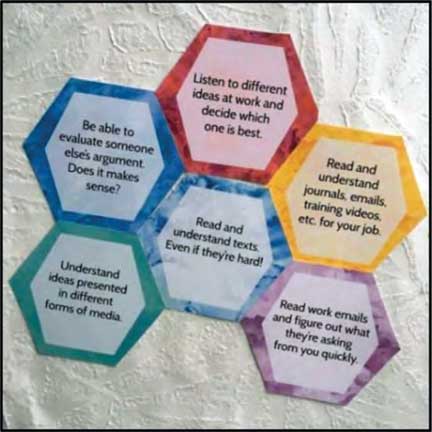P Ajitha
When the pandemic hit, it brought in its wake, a series of unprecedented tectonic changes in all walks of life including the teaching profession. Two very significant events took place during this period. One was the release of the National Education Policy 2020 and the other was the transition to virtual/remote teaching. The timing of the release of the NEP could not have been better. For the NEP to come at this time and highlight the centrality of the teacher was both an acknowledgement of the critical role the teacher plays and at the same time holding her accountable to high standards of pedagogical practices and professional competencies. But on the other hand, the complete unpreparedness and urgency with which educators at all levels had to dive headlong into virtual teaching without enough scaffolding or training was truly a nightmare.
Typically, the start of a new academic session is marked by enthusiasm and a surge of energy to innovate, but the start of the academic session 2020-21 was marked by anxiety, trepidation and nagging doubts that remained and continued to persist for a long period. For a majority of teachers like me, the resistance to adapt to the virtual platform was the most difficult transition to make. Once there, the resistance kept growing, mostly due to discomfort arising out of the vulnerable position that virtual teaching placed teachers in, subjecting them to continuous scrutiny.
It has not been a smooth ride for sure. It has been a journey punctuated with self-induced anxiety, plagued by self-doubt and unprecedented levels of stress induced by the fanatic pace at which one was expected to simultaneously unlearn things incompatible with the virtual world of teaching, learn ways to engage online with Edtech tools and relearn the tricks of the trade and rules of engagement to suit the new learning landscape.

Hours spent online creating content to be shared with students, all the while juggling domestic responsibilities and familial obligations resulted in a skewed imbalance and exhaustion to the point of burnout. It soon gave way to frustration emanating from the failure to ‘connect’ meaningfully and productively in a learning continuum. It was this frustration, helplessness and desperation to create meaningful learning experiences for students online that led me to explore, learn and experiment with Ed tech tools.
Digital tools are a game changer in fostering student engagement and getting them to participate meaningfully in virtual classes. There are different online tools available to effortlessly navigate the virtual teaching-learning landscape. The versatile use of these tools to consolidate students’ inputs to facilitate collaborative learning, critical thinking, integrating art and conducting formative assessments becomes immediately apparent when teachers start to use them. Listed below are the advantages of the transformative features of the teaching-learning process with the adept use of technology in virtual teaching –
- Interactivity and participation
As I began using the interactive elements from different digital tools, I started seeing an emerging pattern of the learning cycle reinforcing a more participatory and democratic format which was hitherto not very visible in conventional teaching. I also realized how the versatility of these tools lends itself to facilitate not only deeper engagement with the text under study but also fosters peer learning. - Instant and systematic feedback
Another useful feature of these tools for the teacher is how they enable tracking the progress in realizing the lesson and learning objectives made by individual students through the detailed reports that can be generated for each of the activities that are conducted in the virtual mode. Since they can be stored digitally, the teacher is able to archive the reports, plot the learning trajectory of each student which can be used for gaining and giving incisive feedback on students’ performance on a range of learning indices – thus making the feedback truly comprehensive and continuous. - Time saving and ease of integration
Imagine having to conduct a formative assessment in the physical classroom like a quiz with objective type questions or subjective/descriptive questions for students to answer. Consider the time, effort and cost of printing worksheets/test papers which then has to be administered, collected and evaluated. Now the process can be carried out virtually by seamlessly integrating educational technology into the everyday teaching routine and in the process save a lot of transactional time and resources which can be put to better use for designing other meaningful learning experiences for the students. - Promoting self-paced learning
The specially curated learning resources and the post class work/ assignment takes on an interesting and engaging dimension with the integration of interactive elements designed to suit not only different learning styles, but also to accommodate for difference in the learning pace. It also addresses differentiated learning and assessment needs to cater to a wide range of diversified and heterogeneous learners. And all this can be achieved while making learning fun-filled and reflective at the same time. Lessons created incorporating various interactive activities on NEARPOD, for example, makes it possible. - Art integration
The interactive slides with drawing tools available on Pear Deck when imported to Google slides/PPT, and shared with students during the transaction of the lesson, make art integration easy and fun. For example, asking the students to illustrate the setting, drawing the different elements of a story (story map) are engaging fun activities that students enjoy doing.

Another useful digital tool to record and preserve art integrated activities is FLIPGRID. The platform enables video responses for a range of learning activities.
I use it both for exercising speaking skills and integrating elements of theatre into creative expressions as an extended classroom activity. This serves manifold purposes. One, it seamlessly blends the performing arts with literature; two, it gives wings to children’s imagination and creativity, and three the recorded response becomes a teaching aid for the teacher to use for the next batch of students.
Here are a few examples of how technology integration has helped in the teaching and learning space.
Effective lesson planning adapted to virtual teaching
The flexibility and seamless integration of technology in a virtual learning setup make it easy to plan lessons by incorporating the five Es of effective teaching and learning listed below with examples:
Engage: By using a visual prompt for the students to look at and type in their thoughts. I have been using a specific thinking routine called SEE-THINK-WONDER from one of several such routines/activities from Project Zero developed by Harvard Graduate School of Education (https://pz.harvard.edu/thinking-routines). Using the interactive collaborate board feature of NEARPOD, students share their thoughts as a response to the visual prompt. A simple pre-reading activity using Google Forms also serves the purpose.
Explore: Links to web material, AV and an array of carefully curated content all in one place to enable further exploration of the topic under study using these digital platforms.
Explain: The transaction part of a lesson is made effective by using teaching aids like Google maps/PPT/Info graphics/Google slides with animated elements to keep not just the visual learners focused but the entire class engaged. These can also be used as summary tools providing the gist of the lesson/main themes in a visually attractive and easily digestible form for students to internalize the core ideas/values/messages embedded in a text.

Elaborate: Extrapolating beyond the text using extended activities like hexagonal thinking (a framework for exploring interconnectedness with texts and also applied to make connections between texts and real life).
Evaluate: Interactive activities ranging from animated quizzes, KWL Chart, Summarizing, open-ended questions, reflection, etc., either used as a standalone activity using NEARPOD or Pear Deck or other tools like Google Forms, Exit Tickets, etc., to gauge learning outcomes.
The experience of teaching online by integrating ICT in language teaching has been an insightful learning experience, which though challenging initially, has been very rewarding in terms of not just forcing me out of my comfort zone but also helping me embrace the constant flux in the ever changing and evolving landscape of educational processes.
The amount and nature of preparation that goes into the planning of these online classes has reinforced the necessity to invest quality time in designing rich learning experiences for our students both in terms of content creation as well as content delivery to maximize the benefits of remote learning and at the same time compensate for the lack of ‘human connect’ (that has been the biggest criticism and challenge teaching online) as far as possible with activities to simulate real time interaction of the physical classroom.
For me personally, it has been a period of exposure to best practices in teaching through multiple pathways of continuous professional development in the true sense of the word while navigating what was initially an uncharted territory!
The author presently teaches English for Secondary and Senior Secondary classes at Delhi Public School, Coimbatore. Her areas of interest include Teachers’ Training and Socio-Emotional Learning (SEL). She can be reached at ajithapaladugu@gmail.com.
Related Article
